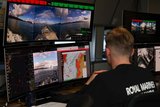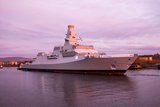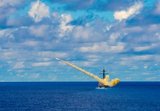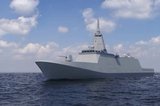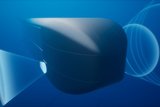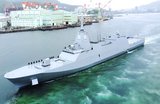SharpEye radars for Ichthys LNG project
Kelvin Hughes has supplied two SBS-800 SharpEye radars for the Ichthys off-shore LNG project, located 220km off the coast of Western Australian in the Browse basin, the company announced on 22 June.
The radars will be installed on the Central Processing Facility (CPF) and Floating Production Storage and Offloading (FPSO) vessel, which are stationed 3.5km apart on the Ichthys field. The CPF and FPSO will communicate through a dedicate fibre optic network.
The CPF sends condensate to the FPSO, which processes, stores and periodically offloads stabilised condensate for exporting to the market.
The two SBS-800 SharpEye radars will provide significant sensor data for the SAAB V3000 Vessel Traffic Services (VTS) core. The radars will provide a combined security surface picture and situational awareness around the operational field. They feature SharpEye technology, X-Band frequency, Doppler processing and pulse compression capabilities to filter rain and sea clutter.
The solid-state transceiver also does not need maintenance and can be installed upmast in the antenna turning unit.
Australian Maritime Systems (AMS) is responsible for the complex design, integration and commissioning of the INPEX CPF and FPSO systems.
Spike Hughes, sales and marketing director, Kelvin Hughes, said: 'The Ichthys field is ranked as one of the most significant oil and gas projects currently under development anywhere in the world, so we're delighted that INPEX has chosen Kelvin Hughes to help provide them with the situational awareness capability that their offshore facilities need.
'Partnering with AMS with a number of other oil and gas projects that we have recently provided radar systems for, it represents a real vote of confidence in our SharpEye technology.'
More from Naval Warfare
-
![US Navy advances with the Harpoon Service Life Extension Programme]()
US Navy advances with the Harpoon Service Life Extension Programme
The US Navy plans to improve Harpoon’s anti-ship and land attack capabilities by equipping the missiles with sensors and technologies required for succeeding in future battlespace.
-
![Mitsubishi eyes future with Australia’s Mogami selection]()
Mitsubishi eyes future with Australia’s Mogami selection
With Australia’s selection of the Mogami-class for Project Sea 3000, Mitsubishi is investigating local production in the next decade as potential export opportunities emerge.
-
![Thales’ new Sonar 76Nano could equip UK Royal Navy on anti-submarine warfare missions]()
Thales’ new Sonar 76Nano could equip UK Royal Navy on anti-submarine warfare missions
The new sonar is designed to equip uncrewed underwater vessels, with the potential to be used by the Royal Navy for its Atlantic Bastion and Atlantic Net missions.
-
![Hanwha wins Australian government approval to increase its stake in Austal]()
Hanwha wins Australian government approval to increase its stake in Austal
The contract would mean the two shipbuilders can collaborate strategically and enhance shipbuilding capabilities in Western Australia.
-
![Royal Australian Navy sizes up modernisation plans for new and existing capabilities]()
Royal Australian Navy sizes up modernisation plans for new and existing capabilities
The Australian navy is pushing ahead with its efforts to modernise its workforce and capabilities while balancing risky submarine upgrades, ageing Collins-class boats and a shrinking minehunter fleet. Head of navy capability RAdm Stephen Hughes updated Shephard on the force’s progress.








